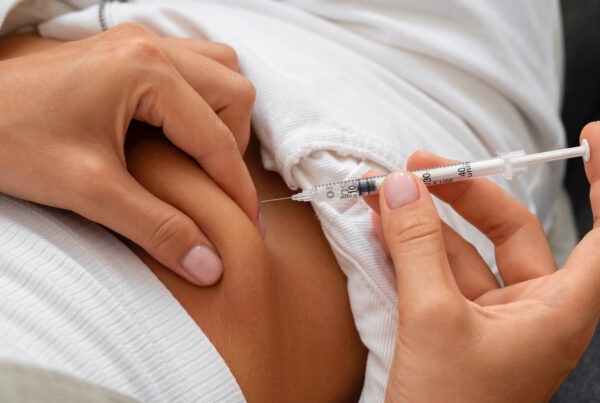Introduction: Prolonged Ketamine Infusion Modulates Limbic Connectivity and Induces Sustained Remission of Treatment-Resistant Depression
Treatment-resistant depression (TRD) remains a persistent challenge in psychiatric care, characterized by limited or no response to standard antidepressant therapies. In recent years, ketamine has emerged as a breakthrough agent due to its rapid and robust antidepressant effects. However, the question of how to extend these benefits beyond a few days or weeks has remained largely unanswered.
A 2021 open-label, proof-of-principle study by Siegel et al., titled “Prolonged Ketamine Infusion Modulates Limbic Connectivity and Induces Sustained Remission of Treatment-Resistant Depression,” published in Psychopharmacology, explored an innovative approach: using a continuous, four-day intravenous ketamine infusion to induce long-term clinical and neurological improvements.
This article unpacks the study’s design, findings, and potential implications for redefining ketamine therapy protocols in patients with severe, chronic depression.
Background: The Need for Sustained Relief in TRD
 Depression affects millions globally, with a subset of patients experiencing persistent symptoms despite multiple rounds of antidepressant therapy. These individuals often live with functional impairment, poor quality of life, and an elevated risk of suicide.
Depression affects millions globally, with a subset of patients experiencing persistent symptoms despite multiple rounds of antidepressant therapy. These individuals often live with functional impairment, poor quality of life, and an elevated risk of suicide.
While ketamine has demonstrated fast-acting effects, those benefits are typically short-lived, often fading within one to two weeks. The Siegel et al. study investigates whether a prolonged ketamine infusion could not only boost initial response but sustain remission for a significantly longer period.
Study Design: Open-Label, Functional Imaging-Based Trial
This was an open-label, proof-of-principle study involving 23 adult participants with confirmed treatment-resistant depression. The central intervention was a 96-hour (4-day) intravenous ketamine infusion, titrated from 0.15 mg/kg/h to a target of 0.6 mg/kg/h. To minimize psychotomimetic side effects, clonidine was co-administered throughout the infusion.
Key elements of the trial included:
- Clinical assessment using the Montgomery–Åsberg Depression Rating Scale (MADRS) at baseline, day 1, week 2, and week 8 post-infusion
- Resting-state functional MRI (fMRI) before and two weeks after the infusion
- A control group of 27 non-depressed individuals for comparison of functional connectivity patterns
Results: Rapid and Durable Antidepressant Response
The clinical outcomes were striking:
- The mean MADRS score dropped from 29 ± 4 at baseline to 9 ± 8 one day after infusion—a dramatic reduction in depressive symptoms.
- Improvements were sustained at 2 weeks (13 ± 8) and still evident at 8 weeks (15 ± 8) post-infusion.
- 21 out of 23 patients completed the full infusion course. The average final dose achieved was 0.54 mg/kg/h (SD 0.13).
- The procedure was well tolerated, with minimal cognitive or dissociative side effects reported.
This represents one of the few studies showing an enduring antidepressant effect following a single, prolonged ketamine exposure, moving the therapeutic potential from short-term to sustained relief.
Neuroimaging Insights: Normalizing Brain Connectivity
 The study also provided valuable insight into how ketamine affects brain network function:
The study also provided valuable insight into how ketamine affects brain network function:
- Decreased hyperconnectivity in the subgenual anterior cingulate cortex (sgACC) to the default mode network (DMN)—a pattern often observed in depression.
- Treatment-dependent reductions in limbic system hyperconnectivity, particularly in the hippocampus, amygdala, medial thalamus, and nucleus accumbens.
- Increased connectivity between the limbic system and frontal areas, indicating potential normalization of top-down emotional regulation.
Exploratory analyses also revealed that smaller right hippocampus volume at baseline predicted greater reduction in MADRS scores, suggesting potential biomarkers for response prediction.
Safety and Tolerability
Despite the extended infusion duration, the treatment was remarkably safe:
- The co-administration of clonidine effectively mitigated typical ketamine-related psychotomimetic effects.
- There were no serious adverse events or discontinuations due to safety concerns.
- Patients tolerated the titration well, reaching effective dosages with minimal discomfort or cognitive disruption.
This approach shows promise for providing longer-term antidepressant benefits without compromising safety or tolerability.
Implications for Clinical Practice
This study challenges the current short-course administration paradigm for ketamine:
- Extended infusion may lead to more durable antidepressant responses compared to single bolus or intermittent doses.
- Functional brain changes suggest a mechanism for long-term benefit, not merely symptomatic suppression.
- The combination with neuroimaging may help clinicians identify which patients are most likely to respond.
If replicated in larger, placebo-controlled trials, prolonged infusion could be integrated into TRD treatment protocols—particularly for patients with chronic, refractory symptoms.
Limitations and Future Research Directions
While the findings are promising, several limitations are worth noting:
- The study’s open-label design introduces potential bias.
- The small sample size limits generalizability.
- Longer follow-up is needed to assess effects beyond 8 weeks.
Future studies should:
- Include blinded, randomized controls
- Explore combinations with psychotherapy or maintenance medication
- Investigate biomarkers like hippocampal volume to tailor treatment plans
Conclusion: A Breakthrough Strategy for Long-Term Remission
Siegel et al.’s 2021 trial offers compelling evidence that prolonged ketamine infusion—a 96-hour IV therapy—can deliver not only rapid symptom relief but also sustained remission in individuals with treatment-resistant depression. Through changes in functional limbic connectivity, ketamine appears to alter the brain’s depression-related circuitry in a lasting way.
Though more research is needed, this study marks a significant step forward in the development of enduring solutions for one of psychiatry’s most intractable conditions.
References
- Siegel JS, Palanca BJA, Ances BM, Kharasch ED, Schweiger JA, Yingling MD, Snyder AZ, Nicol GE, Lenze EJ, Farber NB. Prolonged ketamine infusion modulates limbic connectivity and induces sustained remission of treatment-resistant depression. Psychopharmacology (Berl). 2021;238(4):1157–69.
- Abdallah CG, Averill LA, Salas R, Averill C, Baldwin PR, Krystal JH. Ketamine treatment and global brain connectivity in major depression. Neuropsychopharmacology. 2017;42(6):1210–9.
- Phillips JL, Norris S, Talbot J, Birmingham M, Hatchard T, Ortiz A, Owoeye O, Batten LA, Blier P. Single and repeated ketamine infusions for treatment-resistant depression: A randomized controlled trial. Am J Psychiatry. 2019;176(5):401–9.
- Williams NR, Heifets BD, Blasey C, Sudheimer K, Pannu J, Pankow H, Hawkins J, Birnbaum J, Lyons DM, Schatzberg AF. Attenuation of antidepressant effects of ketamine by opioid receptor antagonism. Am J Psychiatry. 2018;175(12):1205–15.
- Abdallah CG, Sanacora G, Duman RS, Krystal JH. The neurobiology of depression, ketamine, and rapid-acting antidepressants: Is it glutamate inhibition or activation? Pharmacol Ther. 2015;151:128–38.




